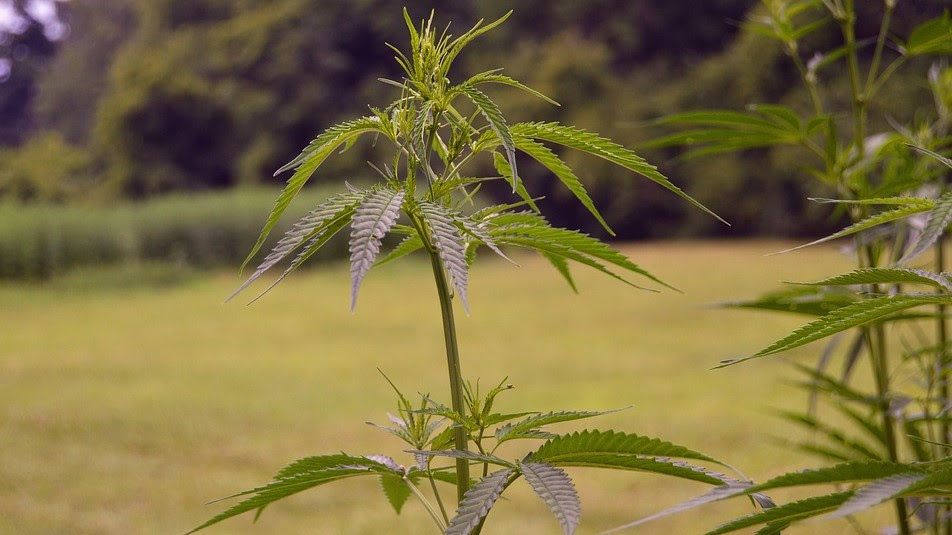
LOCAL
Hemp farming set to expand in Minnesota
The Farm Bill congress passed in December 2018 officially legalized industrial hemp as a crop. Viewed as a cousin to marijuana, hemp can be used for fiber, grain, or oil production without containing levels of tetrahydrocannabinol (THC) necessary for a “high." Minnesota farmers and entrepreneurs have taken notice of the potential for profits. The state has already received 370 applications for 6,000 outside acres of hemp farming and 700,000 square feet of indoor cultivation this year.
The markets and usage for cannabidiol (CBD) oil, another active substance still found in useable concentrations in hemp, are of particular concern. There has been an explosion of health claims associated with the oil, and one CBD based drug has been approved by the FDA for treatment of children with epilepsy. The growing popularity of CBD for usages ranging from a sleep aid to Alzheimer’s prevention is approaching mainstream; Walgreens recently announced it will start selling CBD oil-based sprays and other products in its 1,500 stores.
Amidst the optimism surrounding the burgeoning industry, there are concerns about the growing trend of CBD oil usage. Cody Wiberg, the executive director of the Minnesota Board of Pharmacy, voiced some of his. "We hope that either Congress or the Legislature will put some minimal requirements in place so when people buy a product and it says 5 milligrams of CBD, they're relatively assured that it has 5 milligrams of CBD and that it doesn't have contaminants."
The evidence supports his worries as a 2017 study in JAMA found that only 26 of 84 samples of CBD oils, tinctures and liquids purchased online contained the amount of CBD claimed on their labels. In addition, some contained levels of THC which could put users at risk for intoxication. The FDA doesn’t allow the product to be used in dietary supplements or in unapproved products with health claims, but past these in-theory strict guidelines CBD products fall into muddled regulatory territory. Furthermore, the evidence to support CBD’s health benefits in people and animals is paltry, due in part to the past challenges of conducting scientific research with an illegal substance. According to psychiatrist Dr. Richard A. Friedman, “Future studies may show otherwise, but at present, CBD looks more like an expensive placebo than a panacea.”
MPR
NY Times
NATIONAL
Cross-border selenium contamination
The Elk River originates in the Canadian Rockies and flows southwest for 140 miles to Lake Koocanusa and the Montana border. In addition to water, there are now serious concerns about the river bringing selenium contamination into the state. A 2013 study found heightened selenium levels downstream of the large Canadian coal mines in the river watershed, and a 2014 study linked the selenium to a host of ecological consequences, including malformations and reproductive failure in the fish population.
High selenium concentrations can be a danger to people as well, causing nausea, fatigue, skin lesions, and neurological disorders. The Ktunaxa Nation, located close to one of the mines, pulled its water production after selenium levels exceeded British Columbia’s standards.
The origins of the selenium are suspected to be the mining technique of cross-valley fill, in which hillsides are dug into, coal separated out, and the debris put into waste piles in the valley. Selenium is naturally occurring, but when the waste piles are exposed to air and water, the selenium will leak out of the soil and rocks at a much higher rate. Biologists and public health experts are increasingly alarmed.
Biologist Erin Sexton of the University of Montana calls the impacts “fairly extensive." In a 2013 study, she compared a relatively untouched neighboring watershed to the Elk River Valley and was baffled by the seven-times-higher concentration of selenium in the Elk River area below the mines and reduced algal and invertebrate diversity. Another selenium researcher estimates that 50% of the juvenile fish in the area are being killed each year by the selenium.
Frustration is mounting at British Columbia’s water regulatory system, or lack thereof. Selenium regulations are just guidelines, not laws. Lars Sander-Green, an environmental analyst at the environmental conservation group Wildsight, says, “We don’t have anything enforceable.” The International Joint Commission, a binational regulatory body that oversees Canada and U.S. waters, has also criticized the handling of the situation, accusing Canadian commissioners last year of minimizing scientific evidence on the valley’s selenium problem.
Teck Resources, a mining company operating five mines in the area, plans to build six more water treatment plants by 2030, but three other companies have also proposed opening new mines in the meantime. Even if these are put on hold, though, experts are calling for real solutions to what is now a long-term problem.
Yale School of Forestry & Environmental Studies
INTERNATIONAL
More research emerging on dangers of disease spread with climate change
A new study in PLOS Neglected Tropical Diseases says as many as a billion additional people could be affected by disease carrying mosquitoes by the close of the century due to the effects of global warming.
Researchers investigated what would happen if Aedes aegypti and Aedes albopictus, the two most common disease carrying mosquitos, were to follow the patterns of projected climate change. The results showed much of the world’s population could be exposed to diseases such as Zika and dengue that were previously contained to the tropics.
Mosquitos are classified as one of the most dangerous animals in the world by the World Health Organization because of their ability to carry numerous devastating diseases. “Climate change is the largest and most comprehensive threat to global health security,” says Colin J. Carlson, a postdoctoral fellow at Georgetown University and co-author of the study. “Mosquitoes are only a part of the challenge, but after the Zika outbreak in Brazil in 2015, we’re especially worried about what comes next.”
The pattern of change found in the study was not straightforward, as some regions currently affected by diseases from the mosquitos now will be less so in the future as the populations shift with the climate and endanger other areas. “This is only one study to begin understanding the fast-approaching challenges we face with global warming,” says Carlson. “We have a Herculean task ahead. We need to figure out pathogen by pathogen, region by region, when problems will emerge so that we can plan a global health response.”
Homeland Security Newswire
PLOS Neglected Tropical Diseases
